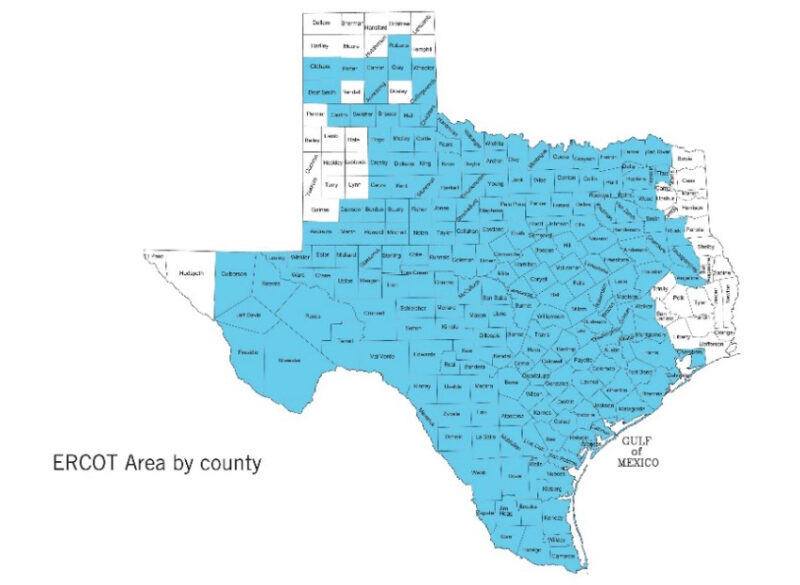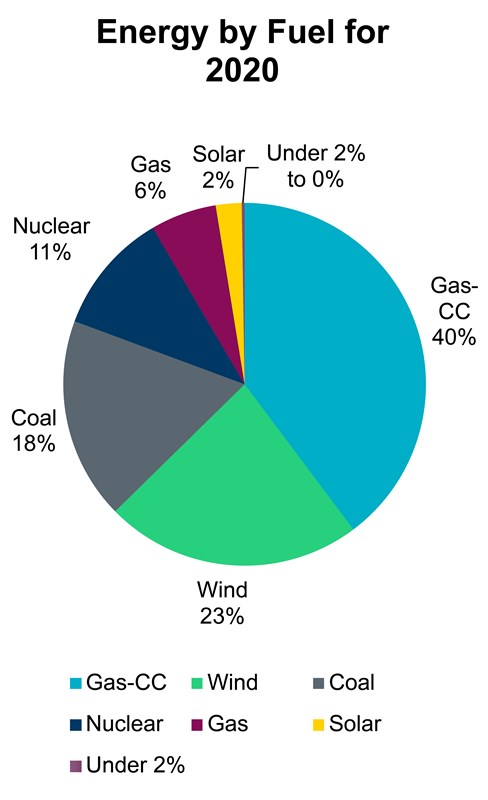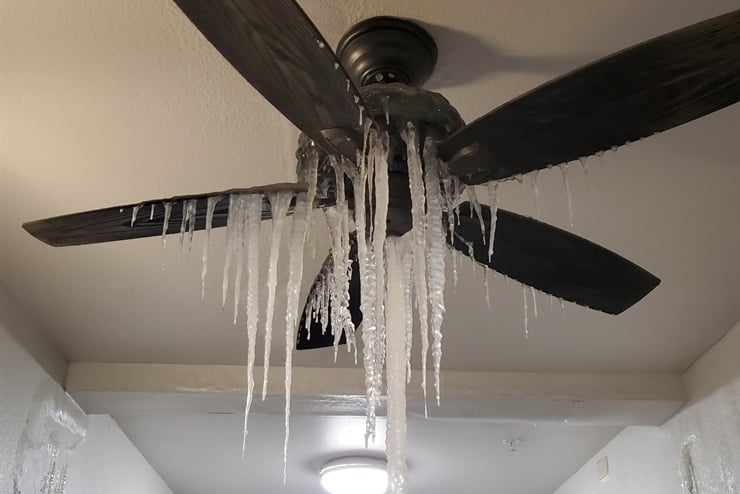It became up close and personal real quick. A favorite restaurant for brunch was closed on Valentine’s Day, a Sunday, because it was already cold and icy. So my wife and I walked to a place only blocks from the house. Then, the power at our home in Austin went off around 2:00 a.m. on Monday. The rest of the week was an endurance contest. Power was restored for only one 12-hour stretch, and we had no water after a frozen pipe broke on Tuesday evening. Fortunately, we had plenty of renewable energy—firewood—thanks to a series of warm winters. And we were fortunate to have a gas grill out back for cooking and hot coffee. It was a week to remember.
As one who has practiced energy law for more than 40 years and who teaches Energy Law and Policy at the University of Texas School of Law, I had more interest than many in what was happening with blackouts and the Texas electric grid. From my perspective, the blackouts were a surprise only in that they happened in the winter rather than during the summer’s peak air-conditioning season.
The blackouts had multiple causes. But we can start with a given: Electricity is central to our lives, whether for heat, light, recharging cell phones, powering the internet and the cloud, or operating energy supply networks, including pipelines and electric generation facilities. The loss of electricity during the Texas blackouts resulted in dozens of deaths. Given these realities, it is apparent that meeting demand is critical. It follows that the Texas electric grid must ensure, as best it can and with due regard for costs, that backup systems are in place to guard against blackouts.
 Some 90 percent of the electric load in Texas, covering 208 of the 254 Texas counties, is included in the electric grid managed by an independent system operator known as the Electric Reliability Council of Texas (ERCOT), a non-profit entity that operates under the aegis of the Texas Public Utility Commission. The extensiveness of the ERCOT grid’s coverage may be appreciated by reviewing a map of the counties under its management.
Some 90 percent of the electric load in Texas, covering 208 of the 254 Texas counties, is included in the electric grid managed by an independent system operator known as the Electric Reliability Council of Texas (ERCOT), a non-profit entity that operates under the aegis of the Texas Public Utility Commission. The extensiveness of the ERCOT grid’s coverage may be appreciated by reviewing a map of the counties under its management.
ERCOT does not generate electricity. Rather, it manages the grid—an elaborate network of interconnected utility transmission lines—for reliability and dispatch. It also administers the pricing system for electricity sold into the grid by independent power producers. Greatly simplified, the pricing system has three parts: a day-ahead auction based on ERCOT demand forecasts, a real-time component for departures from forecasts, and an ancillary services market.
The grid pricing system administered by ERCOT is described as an “energy only” market. That is, it counts on the prices in the market to induce adequate capacity rather than separately auctioning “capacity rights.” As discussed below, distortions in prices under this system undoubtedly contributed to the blackouts during the Big Freeze.
 Under ERCOT, the power-generation mix in Texas has notably changed over the last dozen years. In particular, the percentage generated by wind and solar has increased markedly—from 4.9 percent in 2008 to 25 percent in 2020. At the same time, coal generation has decreased markedly while gas has increased slightly and nuclear has declined slightly. This energy mix is shown in this ERCOT pie chart.
Under ERCOT, the power-generation mix in Texas has notably changed over the last dozen years. In particular, the percentage generated by wind and solar has increased markedly—from 4.9 percent in 2008 to 25 percent in 2020. At the same time, coal generation has decreased markedly while gas has increased slightly and nuclear has declined slightly. This energy mix is shown in this ERCOT pie chart.
So, why did the blackouts occur—and what happened during the Big Freeze? For some time, many have anticipated that rolling blackouts would occur during Texas’s summer months when the wind is relatively quiet and peak demand hits around 75,000 megawatts under high air-conditioning loads. The surprise was that the blackouts came first in the winter. The question is how this happened.
The quick answer is that the state’s theoretical available capacity of 82,513 megawatts, when adjusted for seasonal load, typical maintenance, forced outages, low wind production, and thermal outages, could not meet the winter peak demand of over 69,000 megawatts during the freeze period from Feb. 14 to Feb. 19. The energy that ERCOT anticipated to have available, as shown in its 2020 Seasonal Assessment of Resource Adequacy report, is instructive.
The deficit was dramatic, though the problem was entirely foreseeable. Under the scenario in the last column, adequate generation capacity would not be available to meet winter peak demand under the season’s reasonably expected peak conditions. Indeed, when peak demand exceeded 69,000 megawatts during the Big Freeze, the only alternative was rolling blackouts. Other events, such as low wind and planned maintenance, happened, and the blackouts were the inevitable result.
As to sources of generation during the Big Freeze, it is important to appreciate that while all generation sources fell off, the backup sources were critical to the continued generation of electricity. This essential role may be understood by reviewing the sources of generation.
Of note, the grid requires maintenance of a stable frequency in order to continue to operate. As generation facilities go offline, maintenance of that frequency becomes ever more tenuous, with variations causing generating facilities to “trip off”—go offline—in order to protect them from damage. For this reason, ERCOT must correctly anticipate demand and supply changes on an hourly basis so that rolling blackouts can be instituted before massive tripping off occurs. At the extreme, if the entire grid were to go down, it could be weeks or months before it is brought back up.
How did the shortage of capacity come to be and what might be done? In brief, the answer is that intermittent sources, such as wind and solar that are not always available, require back-up generation to provide electricity when wind or sun are lacking, or when freezing or snowy conditions prevail. Gas, coal, and nuclear thermal sources have filled this role, but with decreasing capacity to do so. Over the last dozen years, Texas coal generation has dropped by one-half, nuclear has declined slightly and gas has increased slightly. This has occurred as Texas electricity demand has grown by 1-2 percent per year, a rate of growth that is expected to continue. This was, and is, a recipe for disaster.
If we posit that new coal capacity is unlikely to be installed (for environmental and other reasons), and that new nuclear capacity is not likely in the foreseeable future, under the existing system the inadequate resources problem will continue to get worse unless a different path is taken. The answer for the present must lie with new natural gas generating facilities. The reality is that for every new megawatt of installed intermittent capacity there needs to be installed a corresponding new megawatt of backup capacity.
This gets to a central issue, namely price levels on the grid that have not been adequate to induce sufficient new gas-fired generation. And why have price levels been inadequate? Without debating the proper role for wind energy on the electric grid, we may simply observe that artificially depressed electric prices in the competitive grid market have been and continue to be a significant issue.
The depression in prices is largely attributable to markets for wind-generated electricity being distorted by various subsidies, most notably the Production Tax Credit under the federal income tax code—a credit that is currently $18 per megawatt hour for new generators. Indeed, only a matter of days after the Big Freeze abated on Feb. 19, electricity produced by wind generators was selling into the grid for a negative price. Wind-energy producers were paying the grid to take their electricity, so that they could receive the tax credit against income.
There is no doubt that incentives such as price signals make a difference. In a competitive energy market, distortions in those signals have a cost, which Texans saw first-hand this winter. Something had to give, and it did. Generation facilities are costly and require significant lead times.
So what about peak pricing—the practice of charging consumers higher rates during periods of higher demand—to induce backup capacity? One argument is that, notwithstanding the artificially low day-to-day prices on the grid, peak prices can nevertheless provide adequate incentives in the market to induce the building of sufficient backup capacity. However, there are two principal difficulties with this argument. One is theoretical and the other is practical from a policy standpoint.
First, the theoretical difficulty: A market that depends on extremely high prices during times of very high demand relative to supply is inherently flawed, due to the challenge of adequately predicting the demand relative to supply, especially to the extent it is weather-related. This problem is exacerbated by the existence of a cap on electric prices on the Texas grid.
Second, the practical difficulty: A market that depends for proper clearing—i.e. eliminating discrepancies between supply and demand—on extremely high prices during times of crisis when folks are suffering, as during the Big Freeze, is bad policy. Prices skyrocketed as high as $9,000 per megawatt hour during the Big Freeze, and that was in itself a shock to the system.
 Other factors, including problems with critical infrastructure, compounded the Big Freeze crisis. One of these involved freeze-offs of natural gas production in the field. At the very cold temperatures during a freeze, a portion of natural gas production will be shut off due to freezing of water in gathering lines, creation of methane hydrates, and the like. These facilities are generally not winterized in Texas.
Other factors, including problems with critical infrastructure, compounded the Big Freeze crisis. One of these involved freeze-offs of natural gas production in the field. At the very cold temperatures during a freeze, a portion of natural gas production will be shut off due to freezing of water in gathering lines, creation of methane hydrates, and the like. These facilities are generally not winterized in Texas.
Freeze-offs can also occur at electric generation facilities. During the Big Freeze, for various reasons, the extreme cold prevented certain generation facilities from functioning normally. As with gas production facilities, these facilities are generally not well-winterized in Texas, where handling summer heat is the greater concern.
Compounding all these problems were the effects of blackouts on gas transportation facilities. It is estimated that some 50 percent of critical infrastructure for moving gas, such as gas compression facilities, now runs on electricity rather than natural gas. This change came primarily for the purpose of limiting greenhouse gas emissions. Although electric transmission and distribution utilities maintain, when possible, “critical infrastructure” lists of facilities to be supplied during rolling blackouts, many such facilities necessary for moving gas to gas-fired electric plants were not on such lists. This curable problem should not recur.
Certainly, human error played a significant role in precipitating the crisis. For example, ERCOT arguably waited too late to initiate rolling backouts. The delay may well have caused many more generation plants to trip off-line than would otherwise have been the case. By contrast, gas distribution companies began curtailing low priority industrial customers on Friday, Feb. 12 and Saturday, Feb. 13.
In the case of the Big Freeze, human error has led to much finger-pointing and excuse making. As with other issues, one would hope that the blame game will be put to rest, allowing constructive solutions to be proposed and implemented in a timely fashion.
Any doubts about the centrality of electricity to life in the 21st century have surely been resolved by the Big Freeze, which offers us a number of lessons. Above all, the sound management, stability, and robustness of the grid is essential. This should be cause for reflection. Many steps can be taken to deal with situations like those that occurred during the Freeze. We that backup generation capacity and reliability normally require significant lead times. While costly, the investment must be made if capacity is to be there when needed.
Finally, as to pricing, the benefits of a competitive market system such as the Texas electric energy market require the right price signals and other incentives to induce adequate investment. Both taxes and subsidies can distort those signals, as can deficient regulation and flawed market design—all with deleterious effects.
Let us hope that Texans, as well as the rest of the nation, will reflect upon these lessons, and that we will put the results of our reflections to good effect.
(Correction: The seventh paragraph of an earlier version of this piece incorrectly stated the wind and solar generation increased to 23 percent in 2020, rather than 25 percent. The 23rd paragraph also incorrectly stated that 50 percent of gas transportation facilities moves on natural gas rather than electricity, when the author meant “electricity rather than natural gas.”)
Image Credit:
above: burst pipes and a frigid indoor environment in Thomas Black’s Dallas apartment building (Twitter/@thomasblackgg)

Leave a Reply